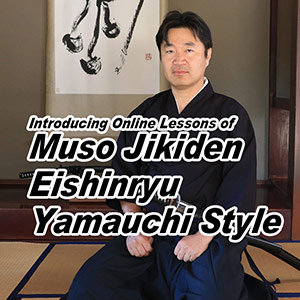Although it has vanished from most other temples in Japan, Zenkoji retains the religious fervor of a functioning pilgrimage mecca. The clouds of incense smoke and prayers of countless pilgrims at the main hall attest to the importance of Zenkoji as an authentic place of worship.
A place for prayer
All are welcome, regardless of gender, creed or religious belief. Zenkoji is a non-sectarian temple whose religious leaders share the responsibility for rituals.
A place for light
Although its hidden image is the focus of Zenkoji, the faith practiced here transcends idol worship. Zenkoji's Buddha triad is a symbol of light, leading to the acquisition of wisdom and truth.
Origin
Legend says that Zenkoji's golden triad was the first Buddhist image to arrive in Japan in 552. The image became an object of dispute between two feuding clans and was dumped into a canal.
Later rescued from the canal by Honda Yoshimitsu, it was first enshrined in his home here in Shinano, current Nagano. The temple was caled Zenko, named after Yoshimitsu's name. Today, the actual image is never shown, but every seventh year an exact copy is revealed in a grand ceremony called "Gokaicho."
Ritual
In a morning ritual held daily without fail, the high pries or priestess faces visiting pilgrims to pray for their salvation and that of the world.
Pilgrims rub smoke from the huge incense burner on their bodies to bring health and good fortune. Early morning visitors lines up here to receive a morning blessing from the high priest or priestess.
Honden - the main hall
It is the national treasure of Japan. According to old records, Zenkoji burned down several times and the current main hall was reconstructed in 1707. It is one of the biggest wooden buildings in japan and is a very unique Buddhist temple building of the Edo Period. The main hall is comprised of two parts. The roof looks T-Shape(Shumoku-built) as you see it from up above. Under the main altar is a pitch-dark tunnel called "Okaidan." Touching the "Key to Pure-Land" while passing through the tunnel will bless a strong tie with the main image (Nyorai) and promise to Pure=Land.
Niomon Gate
The gate was built about 100 years ago after the former one was burned away by a fire. On either side of the gate are two fierce-looking guardians who prevent evil sprits from entering the premise. 14m high, 13m wide and 7m deep.
Roku Jizo
Jizo-Bosatsu are very popular among Japanese people. They are our protectors of the next six realms. All souls must transmigrate through realm until they attain enlightenment. Each of these Jizo protects one of the six realms.
The six realms are: Hell, Starvation, beasts, carnage, human beings and heavenly beings.
Nurebotoke - Wet Jizo
This seated bronze figure of Jizo-Bosatsu was fabricated in 1722. THe main hall had burned down several times in the past, so this Wet Jizo serves as a prayer for protection of the temple from fire.
Memorial Monument for Sato Brothers
This is the oldest memorial stone in the Zenkoji premises, dedicated about 600 years ago. It honors two warrior brothers, Sato Tsugunobu and Tadanobu, who tragically died fro their master, Minamoto no Yoshitsune. Their mother has visited Zenkoji and dedicated this monument as a prayer for the repose of their sprits.
Kyozo - Sutra Repository
"Kyozo" was completed in 1759. The octagonal rotating sutra holder inside contain a complete set of Buddhis sutras. One rotaition of the holder blesses one as much religious merit as chanting all the sutras.
Shoro - Temple Bell Tower
The bell was cast in 1667, and the tower was reconstructed in 1853. It is chose as One of the 100 beautiful sounds of Japan.
Official Web:http://www.zenkoji.jp/






